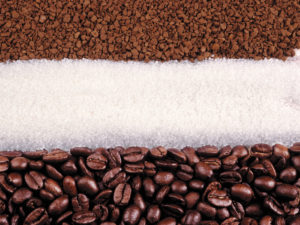 Soft futures were mixed on Monday with sugar, cotton and cocoa marking daily losses, while arabica and robusta coffee advanced.
Soft futures were mixed on Monday with sugar, cotton and cocoa marking daily losses, while arabica and robusta coffee advanced.
On the ICE Futures U.S. Exchange, sugar futures for October delivery traded at $0.1686 a pound at 13:21 GMT, down 0.30% on the day. Prices ranged between days high and low at $0.1704 and $0.1679 a pound respectively. The sweetener settled 0.88% lower on Friday but marked a 0.63% weekly gain. Sugar traded lower during the day on speculation that the amount delivered against the expired July futures will be the lowest since seven years. The main quantity will come from El Salvador and Argentina, said Arnaldo Luiz Correa, a director at Archer Consulting. He commented for Bloomberg: “The small volume compared to initial forecasts for a monster delivery can be considered bullish. The premiums in the physical market appreciated to such a level that hindered any delivery of Brazilian sugar.”
The sweetener was recently pressured following reports that demand for ethanol in Brazil rose, which made millers use 6% more cane for production of the biofuel, compared to last year’s 52%. Brazil accounts for 20% of global sugar production and 39% of global exports. Last week, Kingsman SA, a unit of McGraw-Hill Financial Inc.’s Platts, said for Bloomberg global sugar surplus might be 4% lower than previous estimates due to reduced output in Australia and Ukraine. Kingsman increased its forecast for sugar production in Belarus, South Africa and El Salvador. India may also produce more of the sweetener than forecast, up to 23-24 million tons for the 2013-2014 year from 22.3. Global sugar surplus is expected to be more than forecast in the 12 months ending in September and might total 11.87 million tons, above the previous 11.8 million tons estimate.
Coffee advances
Elsewhere on the market, arabica and robusta sorts both advanced. The C contract for September delivery traded at $1.2175 a pound, up 1.08% on the day. Prices ranged between days high and low at $1.2185 and $1.2013 a pound respectively. Arabica settled last week 0.88% higher after plunging 1.29% on Friday.
Meanwhile, robusta coffee for September delivery also gained on the day, standing at $1 787 a ton at 13:33 GMT. The sort, which is mainly grown in Vietnam, rose by 1.59% today and held in range between $1 790 and $1 751 a ton.
Arabica coffee prices fell to a three-year low of $1.1717 a pound on June 20 amid concerns over ample global supplies. Both coffee sorts were under pressure recently as favorable weather conditions boosted prospects for crop development in the world’s top two producers and exporters of the two sorts – Brazil and Vietnam. According to the International Coffee Organisation, the 2012-2013 arabica production in most countries will jump 5.7%, and robusta output will rise by 8.8%.
Cotton drops
Cotton fell on Monday, despite reduced planted acreage in the U.S. Prices kept being pressured by faltering demand prospects in the worlds biggest consumer – China. Cotton December futures traded at $0.8328 a pound, down 0.87% on the day. Prices ranged between days high and low of $0.8430 and $0.8326 respectively. The fiber settled 0.26% lower last week following a 6.22% plunge during the preceding one.
In its acreage report on Friday, the U.S. Department of Agriculture said all cotton planted area for 2013 is estimated at 10.3 million acres, 17% below compared to last year. However, the fiber was recently pressured down as concern over slowdown in demand arose from the world’s biggest consumer, China. The Asian country received a yet another downward revision of its GDP forecast by Goldman Sachs last week. Today, the Asian country released more negative news, which however generally matched projections. According to the National Bureau of Statistics and China Federation of Logistics and Purchasing, China’s PMI fell to 50.1 last month, below May’s 50.8 figure, but above expectations of 50.0, which is the neutral level of the scale.
Meanwhile, according to a separate private index prepared by HSBC and Markit Economics, operating conditions in China’s manufacturing sector worsened during June for a second month in a row. The Asian country’s HSBC PMI stood at 48.2 in June, down from May’s 49.2 reading and below projections of 48.3, straying further from the neutral level.
In its crop progress report last Monday, the U.S. Department of Agriculture said that overall last year’s crop was of better quality, compared to the current one. As of June 23, 19% of the cotton was categorized as “Very poor” and “Poor”, 34% was “Fair” and 43% was of “Good” and “Excellent” quality. Last year 16% of the crop fell in the “Very poor” and “Poor” categories, 34% in “Fair” and the remaining 50% was categorized as “Good” and “Excellent”. Investors are now looking ahead at the U.S. Department of Agriculture’s will planting and stockpiles reports, scheduled for publishing on June 28.
Elsewhere on the market, cocoa is marking a daily decline after settling 1.48% higher last week. Cocoa traded at $1 432 a ton, tumbling 0.62% by 13:45 GMT, and ranged between days high and low at $1 438 and $1 421.





